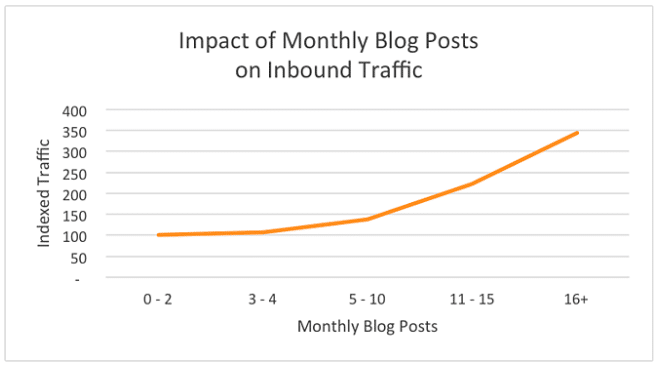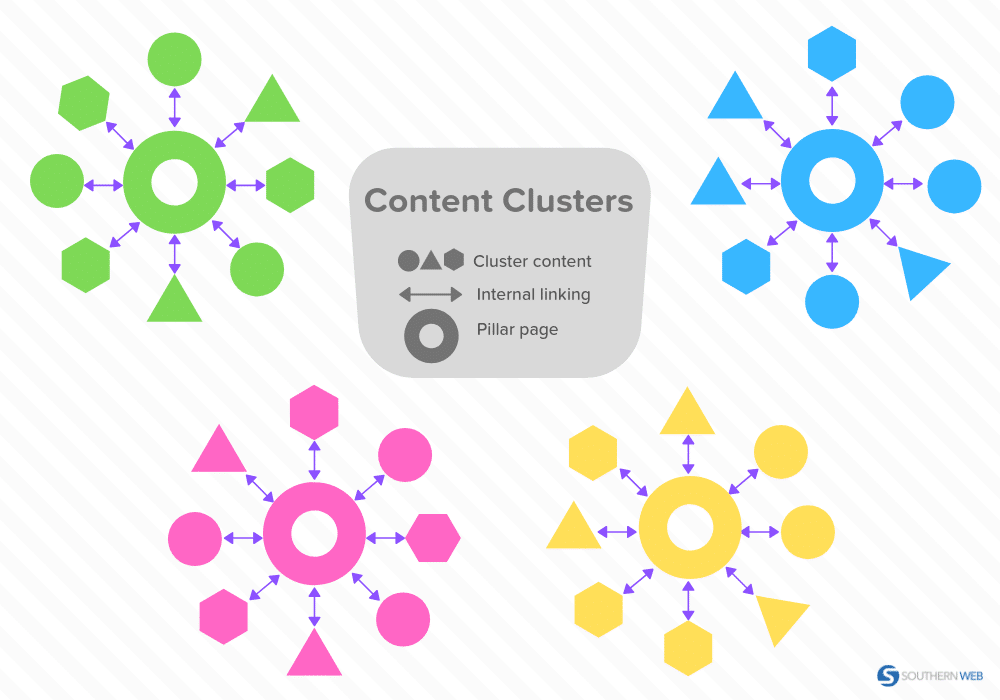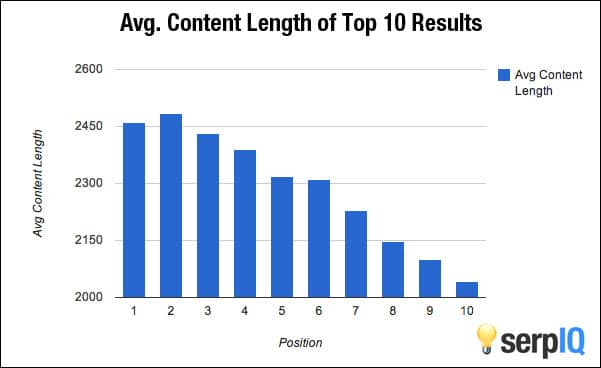You understand the ins and outs of SEO content hubs. You’ve created a dynamite keyword strategy. Now you have to build the thing. But what does that look like?
Many business owners have no idea. That’s why they write by the seat of their pants. After all, writing something must be better than writing nothing, right?
Well, yes and no. “I’m going to write a ton of blog posts and hope for the best” isn’t a great strategy. And—spoiler alert—it doesn’t work. Sure, you might get lucky with a few posts. But overall, you won’t reap the rewards you could have with a smart, strategic plan.
Well-executed content hubs leave nothing to chance. Ideally, you should come up with most of the topics you’re going to write about well in advance and only after extensive SEO research.
There are three key components to every successful content hub: frequent content clusters, pillar pages, and the quality of your content. Let’s review each of these.
Content Hub Strategy 1: Frequent, Cluster Content
Put simply, a content calendar is a timeline that shows when your blog posts will go live. But that’s not all it can do. Done right, a content calendar is the strategic backbone of high-ranking, multi-year content hubs. When planning out your content calendar, you’ll need to focus on two key considerations: post frequency and content clusters.
Posting frequency really matters
When it comes to blogging, what’s more important: quality or quantity? The answer isn’t so simple.
Of course, content quality is an important ranking metric for both Google’s spiders and human readers—no one wants to read a blog post that’s terribly written. But even if you’re Hemingway, no one is going to read your blog if you only post once a quarter, either.
We’ll cover what “quality content” means for search engines later. For now, let’s focus on posting frequency. Marketing studies have shown that if you post 16 times or more per month, you receive 3.5 times more traffic than if you were to post fewer than four times per month.

There are two key reasons why posting frequency is so important when you’re building a content hub:
- The more high-quality content you post, the more search authority your content hub earns (e.g., higher-ranking pages, more keyword authority than your competitors, warmer organic traffic, etc.).
- Americans spend, on average, 6 hours and 42 minutes online each day. In other words, we read a lot of content, and we know the difference between well-written, well-designed experiences and copy-and-paste drivel. But we also have short attention spans. Simply put, the modern consumer expects quality content on demand. So, if you post frequently in your content hub, you’re more likely to get repeat viewers than if you post whenever you feel like it.
Content clusters attract your target audience
When devising a content hub, it’s also important to think about what’s going into your content calendar from a keyword perspective.
Let’s say you run a local bakery called “The Muffin Man.” You don’t just sell muffins—you sell cakes, scones, and even babka. Naturally, you want to create a content hub to attract more visitors to your bakery… but how do you do that?
One strategy is to blog about everything you make, from muffins to cookies and croissants to pies. The problem with this approach, however, is that your content will be a mile wide and an inch thick. Yes, all your keywords will get a small boost—but if you’re trying to rank on page one of search results, this strategy won’t be effective.
A much better content hub keyword strategy is to focus on content clusters or topical themes. If you’ve ever used a keyword research tool, these are the “related keywords” that pop up whenever you research a keyword.
For instance, if you truly are the Muffin Man, you should try to dominate the “muffin” keyword cluster. Start with multiple muffin-focused posts, like, “The 10 most expensive muffins in the world,” “Can muffins actually be healthy for you?” or “Origins: where the first muffin was baked.”

Granted, keyword clusters aren’t written in stone. In keyword research tools like SEMrush, your target keyword could have hundreds of related keywords or just a handful. As with most SEO research, identifying the right set of keywords for a given cluster is one part science and one part art.
The “science” part of content hubs boils down to doing your due diligence using a keyword research tool—which includes spying on the competition. This is how you arrive at your long list of keywords for each cluster. Naturally, you’re looking at important metrics, like monthly search traffic and ranking difficulty.
The “art” part is putting yourself in the shoes of your target audience and thinking about the search intent behind each keyword. Don’t just take your research tool’s word for it—if you were your own customer, would you read a post on X, Y, or Z? Ideally, you want to identify “low-hanging fruit” keywords with a combination of the right metrics and great search intent.
Once you’ve narrowed down your content clusters, it’s time to write pillar pages for each one.
Content Hub Strategy 2: Build Pillar Pages
Pillar pages (also called pillar posts) are one of the best ways to take your content hub to the next level.
A good way to envision the relationship between content clusters and pillar posts is to think of a jigsaw puzzle. Each puzzle piece is like one blog post in a larger content cluster. If a reader finds any one of these pieces on its own, they’ll kind of get it… but they won’t see the bigger picture.
In this analogy, the pillar post is like the box the entire puzzle comes in—it shows readers exactly what they’re getting themselves into and allows them to preview the larger content cluster they may be interested in.
A pillar page is a long-form, “greatest hits” version of all the shorter, more in-depth related blog posts in a content cluster. Like support pillars, these high-authority posts can be easily identified by their titles (e.g., “The Ultimate Beginner’s Guide to Baking”), longer length (usually 2,000–3,000+ words), and anchor links in subsections that guide readers to helpful supporting posts (e.g., “What kind of flour should you use to bake muffins?”).
Internal linking is an easy win
In the content cluster diagram above, internal linking strategy connects pillar pages to supporting pages in the same content cluster. Internal linking is just one type of backlinking, but it’s the easiest one to pull off because you have full control of your own content.
Whenever you link to one of your blog posts in another one of your blog posts, that’s an internal link. You may have done this plenty of times to just be helpful to your readers, without even realizing that internal linking is a powerful SEO strategy.
For instance, using our local bakery example, we would link “How many calories are in a muffin?” to the corresponding section of “The Ultimate Beginner’s Guide to Baking.” Of course, the internal linking should go both ways. At the end of the “How many calories are in a muffin?” post, it would make sense to link to the pillar page, as well.
Not only are pillar posts a helpful and sensible way to organize your “best hits” for readers, they’re also favored by search engines. Done right, high-quality pillar pages and supporting posts will help you rank much higher in search results. We’ve helped some of our clients get to page one for some of their target keywords in as little as one month.
Pillar pages are getting longer
What’s the best length for a pillar page? Well, all other things being equal, the longer the better.

The average length of content that shows up on page one of Google search results is over 2,000 words, with the top three search results averaging around 2,450 words.
This isn’t too surprising. As more content is published online, content marketing becomes increasingly competitive and readers have ever-higher expectations for quality. So, when a search engine has to choose between a post you wrote or one your competitor wrote on the same topic (assuming domain authority and quality are more or less the same), the longer post will usually end up ranking higher.
There’s also a practical reason search engines rank longer posts higher. They typically have more:
- Helpful information
- Related keywords
- Internal links
- Backlinks
- Traffic
Finally, pillar posts are an easy way to repurpose and update old content. Many company blogs are full of related article topics that were perhaps published months apart or that don’t have any internal links, so readers would never find them via search engine. (All that being said, don’t just copy and paste old content. Search engines don’t like that at all. In fact, Google punishes domains with duplicate content.)
A pillar post not only gives you a fresh injection of SEO authority, but it’s also a great way for you to be more helpful to your target audience and show them that you genuinely care about their concerns and “get” what they’re interested in.
Content Hub Strategy 3: Creating Quality Content
“Quality” is something that can be difficult to define. While it’s subjective for humans, search engines measure content quality using a specific set of parameters. Two metrics, in particular, can act as reference points to give you some additional context when building your content hub.
“Evergreen” vs. “topical” content
One quality metric that search engines care a lot about is whether an article topic is “evergreen.” Let’s start with some handy definitions:
- Evergreen content: This type of content is timeless. It’s usually educational, and it doesn’t have to be constantly updated or risk becoming outdated. It will be as relevant ten years from now as it was the day you posted it. (e.g., the recipe for a scrumptious blueberry muffin).
- Topical content: This is content that’s relevant to your target audience right now, but isn’t evergreen. Typically, topical content is based on breaking news or announcements (e.g., “Best muffins to bake during the pandemic”).
Generally speaking, evergreen content is more valuable when it comes to ranking higher. First, your readers will always find it useful, which naturally translates to more traffic and backlinks over time. This is why nearly all pillar pages are on educational, evergreen topics.
But even Google and Bing aren’t unreasonable. They know that when you’re writing 16 or more posts each month, there’s no way all of your content will be evergreen. In fact, most of your content will be topical, based on newsworthy events or developments your audience might find interesting.
When the opportunity presents itself, you can also write hybrid evergreen-topical content. For instance, you could publish a piece about “The most popular muffins of 2021.” Then, when 2022 rolls around, you can update it slightly based on trending diet fads.
Readability (i.e., whether your writing sucks)
While many people have different opinions on what “good” writing reads like, search engines don’t see it that way at all. In fact, they rely on readability algorithms to automatically determine how “readable” your content is and for what audience level(s).
This is why we highly recommend using SEO tools like Clearscope and editing tools like Grammarly to improve the readability of your content hubs. Even WordPress has a built-in readability editor that you can use for free.
That being said, since your readers are humans, you can’t only write for search engines. At the end of the day, you should always be putting yourself in the shoes of your readers. Here are a few questions you should ask yourself about every article in your content hub:
- Did I offer anything of value? Most people don’t read blog posts just to pass the time. They’re looking for specific information, guidance, insights, inspiration, sympathy, understanding… the list goes on. Every blog post in your content hub has to provide your readers something helpful. Otherwise, it has no reason to exist.
- Is it original? If your banana nut muffin recipe is exactly the same as other results that rank higher than you (or lower), you’re wasting your time. Sure, maybe your muffins are gluten-free or have finger-licking-good frosting. It doesn’t matter when it comes to the quality of your writing. What matters is that your readers will always have higher expectations than you think.
- Is it easy to understand? It’s amazing (but not surprising) how often I read gobbledygook. Content marketing has gotten so competitive that content mills around the world are making a killing. This means that the vast majority of content out there isn’t well-thought-out or well-written. Whatever you write about, make sure it’s easy to understand. When it comes to content, your job isn’t to be a creative writer but an educator.
- Would I read this? The final and most honest litmus test. It doesn’t matter how much time you spent writing a single post or how much you paid someone else to do it. Would you read it yourself? If the answer is “no” for any reason, you need to go back to the drawing board.
Content hubs get you new customers
It pays to understand how content hubs work because they’re a significant commitment of time and money. Even if you write all the posts yourself, you want to make sure your time is well spent. Fortunately, if you follow our advice, you’re already a step above the competition.
If you want to learn more about content hubs, or are interested in getting advice on your content strategy, we’re here to help.




